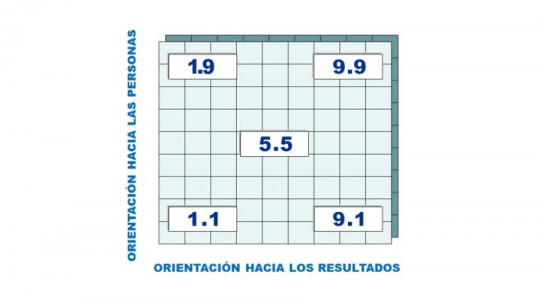Leadership, broadly speaking, is what refers to the set of skills possessed by a person who is in charge of a project, a company or organization, among others, that help him or her to exert influence on the way of acting. and work with the people who are in their charge; There are various types of leadership.
Bureaucratic leadership is one of the leadership styles, and is characterized by being the most formal and perhaps strict way of leading since a bureaucratic leader is responsible for directing his employees or the people under his charge towards the achievement of a series of tasks and objectives based on specific and strict rules.
In this article we will talk in greater detail about what bureaucratic leadership consists of and how it influences different organizations or the educational system.
What is bureaucratic leadership?
Leadership is the ability possessed by some people who are in charge of a work team, organization or institution of various kinds to be able to motivate, organize, influence and launch a series of actions in order to achieve objectives that must involve several people or groups that are under their charge.
As we had already mentioned, there are several leadership styles: participative, charismatic, authoritarian, laissez-faire, strategic, task-oriented, people-oriented, natural, transactional, transformational and, finally, bureaucratic leadership. which is what we are going to talk about next.
Bureaucratic leadership is the most formal way of leading a group of people, since in this case the leader is in charge of directing his employees towards the achievement of a series of tasks and objectives, previously marked, strictly following specific rules aligned with the policies of the company or institution of which they are part.
In this sense, bureaucratic leadership seeks to develop a rigid work environment between the managers or leaders and the employees or members of the work team under their charge, so that the latter must abide by the rules and follow the instructions. in a strict manner that the former have established.
It was the sociologist Max Weber who spoke of bureaucratic leadership as a way of leading that consists of govern a company in a hierarchical manner and leave each position under the supervision and control of a supervisor , so that each of the workers must be responsible to their superior for their own decisions and actions, as well as those of the people under their charge. In this case everything must be governed by a system of rules that are coherent.
It should be noted that in the bureaucratic leadership model also The possibility of promotion is usually taken into account based on the seniority, the ability of the worker and/or the knowledge that he or she possesses
Given the great rigidity of the bureaucratic leadership style, it has not been without criticism; among which are some of the disadvantages that will be explained in the following subsection.

Advantages and disadvantages of the bureaucratic leadership style
Next, we will briefly explain the main advantages and disadvantages of the bureaucratic leadership style.
Advantages
Although in many cases bureaucratic leadership may be inadvisable, it is There are some cases in which maintaining this way of leading could be a good option
Carrying out a bureaucratic leadership style is quite appropriate in those workplaces where there are very serious security risks as may be in those contexts in which one has to work with heavy machinery, toxic substances, etc., so it would be highly recommended that all employees strictly follow the established rules in order to avoid risks.
Other cases in which this style of leadership would be advisable are those workplaces in which large amounts of money are handled, machinery or material whose cost is high, and/or when high-priced products are sold.
In some cases it has also been found that bureaucratic leadership encourages positive results at work, and also efficiently
In a certain sense, another advantage could be the clear and structured establishment of promotions and rewards for workers.
Disadvantages
As we said, given the existing rigidity of bureaucratic leadership, it has generated quite a bit of controversy, so we consider it appropriate to mention the main disadvantages when applying this leadership style.
The first of the disadvantages that should be highlighted is the exaggerated adherence to the rules and regulations stipulated by the company leaders, which It can be quite stressful for your employees
The second of them is the loss of social sense between leaders and subordinates, since the aim is to ensure that the rules are followed in a rigid manner, so the social part becomes secondary. In these cases there is usually no fluid communication between leaders and the people in their charge. Also there is usually a depersonalization of workers each of them being another number in the work chain.
This rigidity in the rules, leaving aside the social level, can trigger a tense work environment within the institution or company, which can be unfavorable in the long term for employees to be satisfied with their work. or camaraderie is encouraged, which could be a plus so that they are motivated and perform better. In this sense, rigidity because they follow the rules and do their work strictly could produce the opposite effect.
Another disadvantage of this high rigidity at work is that leads to great resistance to change making it more complicated to adapt to unforeseen events and evolution in the sector over time.
Among its disadvantages we can also find the fact that there is a high level of control of all factors related to work tasks, as well as with employees, which can favor the development of cases of “burnout” or burnt workers
Bureaucratic leadership in companies and organizations
In companies and organizations where there is mainly a bureaucratic leadership style, there is usually a tendency towards the depersonalization of workers and the maintenance of power within the leadership of that organization by the leaders or managers.
In this type of companies and organizations, privileges are not usually granted to any of the workers , nor friendly treatment, individual favors or privileges, so that strict equality is usually required in the treatment of each and every one of the workers. At least that’s how it would be in theory according to this leadership style.
Bureaucratic leadership in the educational system
In a study carried out by Moral, Amores and Ritacco in 2016, which investigated leadership models in 24 Secondary Education Institutes in the province of Granada (Spain), it was concluded that there was a marked tendency on the part of their directors towards bureaucratic leadership oriented that the educational center functions and external accountability so that the possibility of developing a collaborative environment in which decision-making could be shared was not offered.
Although there is no doubt that this type of leadership can help in the management and administration tasks of educational centers so that efficient work is carried out, it is also necessary for center directors to take into account other fundamental aspects to develop an environment conducive to improving student learning.
However, it should be noted that this sample is not large enough to generalize that there is a prevalence of this leadership model in institutes at the national level, although it should be kept in mind for future research.









